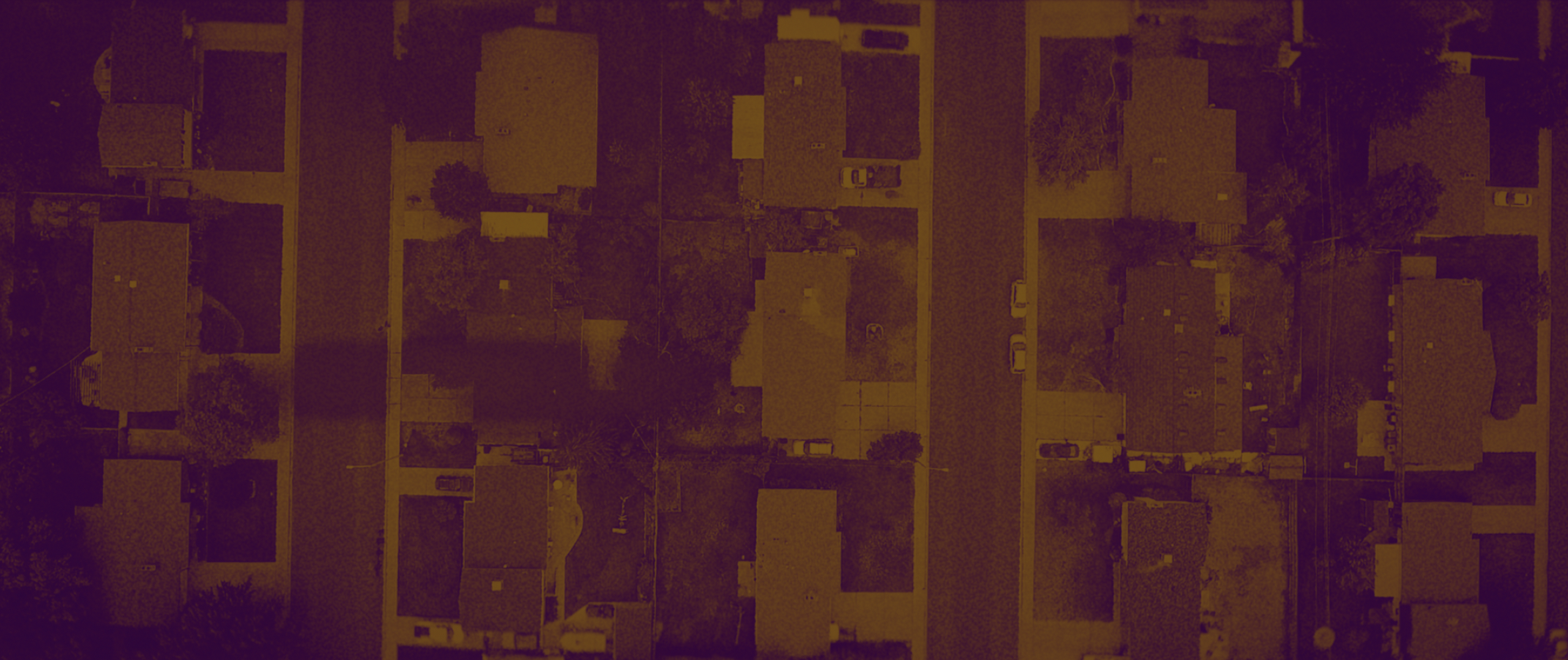
HOME PROTECTION: Part Four
by Brendan Steidle
Personal Safety Alternatives
If police are armed, why shouldn’t you arm yourself and your home with a gun?
Well—even police don’t have the best training when it comes to firearm use. As we’ve seen in “officer-involved” shooting after “officer-involved” shooting. The euphemism says it all: officers were involved, but did they pull the trigger? Did they mean to pull the trigger? Should they have?
Police forces across the world are trying to find ways to make that question moot. To mute the sound of gunfire, to diffuse dangerous situations without guns altogether.
Why? Because guns are blunt weapons. They’re more like grenades than precision instruments for disarming threats and restoring order. Yes, sometimes it is necessary to incapacitate an unruly or dangerous person—a person who is a danger to themselves and others. But rarely is the goal to execute that person on the spot. If you could, you’d put them to sleep, pluck them out of the moment and into some other space—where no one could be hurt. We don’t have the power of magic—but we have more than just the power of gunpowder. And police are turning to these powers more and more.
Tasers
Night sticks
Pepper guns
Flash-grenades
Super bright lights
Beams of sound
Some are better than others—but many actually work better than a gun. Let’s take a look at what might happen if, rather than having a gun, the average homeowner packed one of these less lethal—more effective weapons:
Two scenarios—both assuming you have no security system beyond the weapon:
SCENARIO ONE: Gun at Home
You’re home. It’s night. Sleeping in bed and you hear something. You think an intruder has broken in—you see a figure moving in the dark. You throw open the locked cabinet beside your bed, and reach for your gun: you fire off a shot at the shadowy figure.
If it’s a real intruder, you have to shoot them in the chest or the head to truly incapacitate them. Are you that good of a shot—to hit the shadow in the dark?
Are you that ready to end a life? If you hit them in the arm, or just graze them—will they retreat—or will they lunge towards you? Even if you do hit them, most gunshots don’t take a person down instantly. If they have a weapon, they’ll still be able to use it against you, even in pain. Maybe they’re more likely to use it if provoked with a shot. Your trouble doesn’t end with the firing of a gun—it may be just beginning.
If it’s not a real intruder—if it’s a family member you may have made a life-altering mistake. Are you prepared to fire into a shadow without a name or a face—in the middle of your room? In the middle of the night? Are you ready to take that gamble?
SCENARIO TWO: Taser at Home
But let’s try this again. You’re home at night. Sleeping in bed. And you hear something. You think an intruder has broken in—there’s a figure moving in the dark. You throw open the locked cabinet beside your bed, and reach for your taser.
This is a taser:
It looks like a gun, it is a gun in many ways—but rather than shooting a bullet that tears through flesh, it shoots out two little probes. Sharp metallic darts at a hundred and eighty miles an hour—fast enough to cut through clothes and pierce the skin but not fast enough to do lasting damage. Darts on a thin wire. The wire unspools from the gun and when the darts hit their target, you send 50,000 volts of electricity into the attacker.
The electricity runs through the body, finding the nerves that control the intruder’s motor and sensory functions. These nerves tell the muscles in the body to contract—and that’s what they do. The intruder falls to the ground—they can’t do anything but fall to the ground. There’s no powering through it, there’s no fighting it off. The taser has essentially taken control of their body and they are left helpless.
If it’s a real intruder, you don’t have to have perfect aim. You don’t have to shoot them in the chest or the head to incapacitate them. Any contact—whether in the leg or the hand—will succeed in taking them down. And they will be taken down—at the first pulse of electricity. Any weapon they have will fall to the ground with them. So you’ll be able to disarm them, to get past them—to get to the rest of your family, to call the police—to find safety. And even if you miss when you fire at the target, you can use the taser as a hand-held high-voltage stun gun to incapacitate the attacker.
“Tasers are so effective that they reduce the chance of bodily harm to police in an altercation by as much as 80 percent.”
Tasers are so effective that they’ve been proven to reduce the chance of bodily harm to police in an altercation by as much as 80 percent (in a study out of Orange County, FL). In fact, the mere presence of a taser can prevent confrontations. In their deployment among police in New Zealand, officers found that for every 6 times a taser was presented, it was discharged only once. And a taser doesn’t kill—so there’s no need to hesitate or worry about lifelong moral soul-searching. Or the bloody mess that guns make of your home and life.
What—though—what if it’s not a real intruder—if it’s a family member, instead? Well, there’s no life-altering mistake to worry about. Tasers do hurt somewhat, but their effectiveness does not rely on pain to be effective. In fact, most of the injuries from taser strikes are from falling down—when the person hits the ground. In a study conducted by Wake Forest University’s School of Medicine, tasers resulted in just two injuries per 1,000 exposures—compared to 500 injuries and 500 deaths per 1,000 exposures of firearms. A taser misfired—or fired at the wrong person—will not kill. A taser misfired will not leave a family member with a permanent disability.
So, tell me—which handheld weapon would you rather have in that situation? A gun - which requires you hit a smaller target, that might not take down the intruder, that might provoke retaliation, that could kill or permanently disable a family member? Or the one that is instantly effective, eliminates the chance of retaliation, and even if fired at the wrong person would not kill or permanently harm them?
The answer is clear—it is undeniable. But maybe home protection isn’t the only kind of protection you seek.
Let’s look at another common scenario—one we haven’t addressed yet but one that often provokes the purchase of a gun:
Scenario 3: Gun on the Street
You’re walking down the street. It’s night. And you’re alone. Half the streetlights are out and the other half are throwing house-sized shadows behind every car. The cars are all parked—all dark. 10 PM or 2 AM it doesn’t matter—the street is empty: no traffic, no pedestrians—no open stores or restaurants. Nowhere to go but where you’re going—forward—or where you’re leaving—back. When you spot a figure on the other side of the street—the other sidewalk—and that figure spots you. You’re both shadows but this shadow crosses now to your side, makes a bee-line towards you—purposeful suddenly, and fast. What do you do?
You reach down—grip your gun.
If it’s a real assailant, you have a few choices to make. Do you hold the gun out in the dim slant of a streetlight and hope the sight of it sends a message? Do you need to fire off a warning shot to prove you’re serious? Or do you shoot at the assailant? You have to decide: is it bright enough for the gun to be seen? Is the threat serious enough to fire the gun in warning? Or would that be too serious? Will it wake the neighborhood—turn this into a crime scene all on its own? If you shoot in warning, where do you shoot? Up at the sky? Are there buildings up there you could hit?
This warning shot business is tricky. If you look at where you’re pointing the gun for your warning shot—which you should be doing—you’re not looking at the assailant. You’re taking your eyes off the threat, and that’s a bad idea. Both seem like bad ideas—firing without looking or looking away while you fire away from your assailant.
But what if you fired at the assailant? That would send all the message in the world—and it could end the world for this stranger. But would you be justified in it—would the crime-scene investigators, the flashing lights and evidence bags—would it all agree with you? That this shadow, walking fast, was a threat? Or would you be arrested on the spot?
Even before they arrived—what would happen? If you really wanted to incapacitate the assailant, you’d have to shoot him in the chest or in the head. If you only injured him, he could still hurt you. Or he could just cry and scream in pain—would you call 911, or would you run? But if you killed him, what would you do then? With a hot body on the pavement and the ring of gunfire in your ear? Your life—your world for at least the next year—would be irrevocably changed. So maybe you just stand there, then—you hope for the assailant to resolve into focus—for your gun to be seen, and the moment to pass. You grip the handle tight. Waiting. Afraid of every outcome. As he gets closer. And closer.
But let’s rewind:
Scenario 4: Pepper Gun on the Street
you’re walking down the street at night alone. Nobody around, nowhere to run. And a figure crosses towards you—moving fast. Purposeful. Aiming unmistakable, it seems, for you.
You reach down—grip your pepper gun. This is a pepper gun:
It looks like a regular gun, looks just as capable and terrifying—but in many ways, it is more capable.
Because it’s non-lethal, it’s ready to be used in more situations, and with less hesitation. Forget those little hand-bottles of pepper-spray—pepper guns fire a blinding stream of chemicals at an assailant and from as far as 20 feet away. Pepper guns are filled with chemicals—oleoresin capsicum and a propellant like nitrogen.
Aimed at the face, the chemicals are an inflammatory agent. Since it’s a spray, it disburses out from the gun in a wider cone than a bullet—making anything that hits the face hit the eyes. Missed the first time? Pull the trigger again. Or again. Or again. Keep trying as long as it takes. Each canister in the gun provides 10 shots to ensure you nail your target—and if targeting is a problem for you, use the light for accuracy. If you need more canisters, you can use them—they’re small and light—easy to carry and easy to reload.
The moment the chemicals hit the assailant’s eyes and nose, they go to work. Eyelids slam shut, the nose and throat fill with mucus, breathing gets so difficult that the assailant bowls over, falling to his knees. But the chemicals don’t just work on the eyelids. They’re so potent that they dilate the capillaries of the eyes themselves—so even if he manages to get his eyes open, he can’t see a thing. Temporary blindness—and a kind of burning, bubbling pain—persist for 20 to 40 minutes. Pepper guns are so effective they're used by police and the military—and they work against rabid dogs. Even bears. Oh—and rather than costing $500—like a handgun— they cost just $50.
What does the decision-tree look like when you have a pepper-gun? Well, it’s a lot simpler.
The first option—intimidation—is still there. Pepper guns come in a variety of colors—so if you have a black one, it looks like gun. Maybe, then, the sight of it and the shout of a warning is enough.
But if the assailant can’t see it—or keeps coming towards you—forget about the warning shot. These guns don’t make the noise a bullet would make—so a warning shot is out of the question.
What’s next, then—if the assailant keeps approaching? Well, with a real gun, remember, you had two choices at that point:
Wait to make sure the assailant really is a threat.
Or fire at the assailant—fire somewhere lethal (like the head or the chest) or somewhere not (like the arm or the leg). Fire and hope for the best—hope that you’re not making a terrible, life-altering mistake.
But with the pepper-gun, the choice is easy: if a threat is approaching, you pull the trigger. You fire. Right at the face. Temporary blindness, searing pain, and coughing, lurching breathing—all of it knocks the assailant down and gives you time to escape. At least 20 minutes of blindness to escape and call the police.
Pepper guns are 100 percent painful and 100 percent blinding when they strike the eyes—nobody can fight through it, not even a bear. But they’re also 100 percent non-toxic, with no life-long side effects. Why? Because the chemicals inside are essentially concentrated acid from hot peppers. Natural agents that neutralize threats without killing or permanently harming them—weapons without the paperwork. Without regret.
I mean, just think: after you fire at the assailant, you don’t have to worry about the crime scene—because the only crime committed was by the assailant. There’s no blood on the pavement, no interrogation of your motives, no crying family members. In all likelihood, you can just go home and tell the cops on the phone what happened. Your life isn’t turned upside down—you can turn, instead, back to your life. And put the incident behind you.
The Effectiveness of Modern Weapons
Yes, when it comes to neutralizing threats—whether the threat of someone entering your home or the threat of someone assaulting you on the pavement, these more modern weapons are not only clear and compelling alternatives—they are, quite simply, better ones.
But don’t just take my word for it. Take the Supreme Court’s word.
That’s right—in March 2016, the Supreme Court affirmed for the first time that tasers and pepper guns are protected under the second amendment—just like traditional guns. So don’t think that by getting one of these tools you are somehow getting something less than a firearm—under the law, these weapons are protected just the same. And as the Supreme Court said, they could actually prove more effective:
“A weapon is an effective means of self-defense only if one is prepared to use it,” they wrote. “Countless people may have reservations about using deadly force, whether for moral, religious or emotional reasons—or simply out of fear of killing the wrong person…I am not prepared to say that a state may force an individual to choose between exercising that right [to bear arms] and following her conscience, at least where both can be accommodated by a [non-lethal] weapon already in widespread use across the nation.”
Concurrent Supreme Court Opinion by Samuel Alito and Clarence Thomas
More than 200,000 people have tasers and stun guns and are not afraid to use them. And even more have pepper guns. Because when combined with a home security system, these personal measures provide a far better measure of protection for you and your family.
Tasers and pepper guns mean the same—or better—personal security without the threat of death. Injury. Or accident. They mean the same—or better—personal security without the chance for lethal domestic abuse. Yeah, that spike for women in the gun deaths chart? That’s gone. Tasers and pepper guns mean the same—or better—personal security without the chance for a family member or family friend stealing and using it against their coworkers, their fellow students or fellow citizens. And most-powerfully, tasers and pepper guns mean the same—or better—personal security without the chance for suicide.
And I can’t stress this enough—if everyone who had a firearm today had instead a just-as-effective non-lethal weapon—a taser or a pepper gun—we could reduce the 21,000 firearm suicides in this country down to zero. I’m not assuming that these people won’t be suicidal—no, they may still have suicidal thoughts and take action on those thoughts—but they’d take action with less lethal tools at their disposal. So they’d have the same suicide completion rate as the rest of the population.
When someone tries to attempt suicide with a gun, it results in a death 83% of the time. When someone tries to attempt suicide by other means, it results in a death 2 percent of the time. Guns are literally more than 40 times as likely to result in a death.
So, what does that mean for the 24,606 people who attempt suicide each year with a gun? Well, if they use a gun, that means that 21,000 of them will die. But if they didn’t have a gun—if instead they used a non-lethal self defense weapon, those 24,606 suicide attempts would result in 492 deaths. Compare:
Today’s world with guns: 21,000 suicide deaths.
A world with non-lethal alternatives to guns: 492 suicide deaths.
So, to be clear—if we replaced every gun with a non-lethal weapon, we wouldn’t prevent all 21,000 deaths. But we would prevent 20,508 of them.
And most who survive an attempt—the majority, in fact, don’t go on to try again.
Looking for security—for a way to protect yourself and your family? Install a home security system. Looking for a way to stop an intruder—or assailant—in their tracks? Get a non-lethal personal weapon. If protection is all you’re looking for, how could you possibly choose anything else?
















